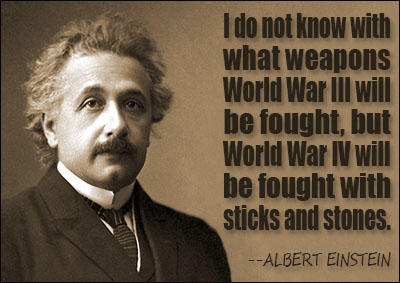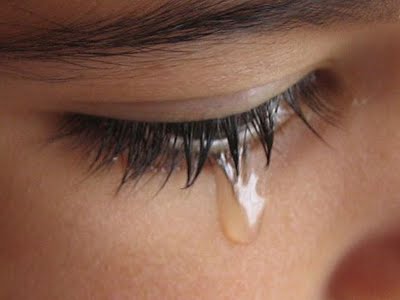Senin, 28 April 2014
Task of sixth meeting
Title : National
Examination
Genre : Narrative Paragraph
National Examination
I think the hardest thing that I have to do
national examination when I was in Vocational hight school. it is something
that does not make sense because the results of our study for three years
specify within three days. but what could I did? I have to followed the rules
in force in the country. it is something thrilling for me.
In the first day, exactly at eight o’clock
am. All of student have ready to doing
the exam. The subjects in the first test was Indonesian language. My mind was
pre-occupied with my countless number of panic. In addition to that, it was
also my first exam test, so I had zero idea what will happen. The
not-so-friendly aura of our proctor also did no help. I was frightened the
whole time. At the start of the test, while our was reading the instructions
out loud, I was busy fidgeting in my seat, trying to quickly recall what I
studied. If only I knew that it only worsens my already-worsening anxiety. As a
result, most of my answers were uncertain, even though I clearly remember
studying them beforehand. I was so frustrated! Little did I know that it was
only the start of an unforgettable nightmare.
The second day, was examination of English
language. I was enjoying the English part because I was confident with almost all
of my answers when in the middle of answering, our proctor commanded us to stop
and proceed to the next part of the test. I looked at my answer sheet and my
eyes widened at how much I have skipped—almost half of it was left blank. How
worse could that moment be? But alas, I can’t do anything about it. So much as
I hate to, I helplessly flipped the pages onto the next part, which is about
reading comprehension. Just when I thought that I was doing fine with the rest
of the exam, the proctor distributed the papers for the essay. I was pretty
confident, not to brag or anything, but I have always enjoyed writing. But I
think I’m going to save that for another essay. To cut to the chase, of all the
time in the world, it was during the test that I was struck with a writer’s
block. Not a single word was coming out of my mind. Needless to say, I ended up
with two paragraphs filled with nonsense. I really hated myself.
The third day, was a test of mathematics. At
the time I have to be calm down and meticulous and have doing the test well,
because that was the last day I took the national exam and I have to be
optimistic and confident, I should believe in my own abilities, I began to read
about each one and started to answered, it was not as hard as I thought to answered,
I remembered the formula mathematical which I have learned before, the proctor
approached me and asked me “why you looked spirit?” I answered “ because the
questions very easy Sir.” the proctor responded well, “do it right and fix your
time as well as possible.” finally I
could finish the math test well and on time.
After that moment I realized, actually the
hardest thing I have to face is fear, if I do something with an optimistic and
confident then the results would be good.But if I panic and nervous the result
will not be good altough I have been studying hard like when the first and
second day I did the test of national examination, but in the third day I did
the test calm down and confidently so, all of question felt easier. I will get
it done properly. indeed be a valuable experience for me. And I was very
grateful when the result of national examination announced I graduated. truly
that was a miracle.
Note :
purple : Orientation
blue : Complication
dark blue : Complication (climax)
Orange : Resolution
Red : Reorientation/ conclution (in form suggestion)
Selasa, 22 April 2014
FIFth MEETING
1. Tell the description of narrative writing and how to differ from other writing genres
Speak
about narrative, we have known about description about narrative writing right?
Ya exactly, a narrative text is a text to amuse, to entertain the reader and
deal with actual or vicarious experience in different ways. Narrative deal with
problematic events which lead to a crisis or turning point of some kind, which
in turn finds a resolution. We can write a narrative text about the facta or
just a fictive story.
The
narrative text is telling of a story or an account of a
sequence of events. One of the four traditional forms of composition (along
with description, exposition, and persuasion). Narration differs from
exposition, which can also relate a sequence of events, in that narration need
not be factual and may be written from the perspective of a character in the
text.
The purpose
of a narrative, other than providing entertainment, can be to make the audience
think about an issue, teach them a lesson, or excite their emotions. In
well-written narration, a writer uses insight, creativity, drama, suspense,
humor, or fantasy to create a central theme or impression. The details all work
together to develop an identifiable story line that is easy to follow and
paraphrase
So, how to differ narative text with the
other writing text genres? We should know a Narrative text is a text focusing
some spesific participants that have several structural features making
different from other genres. Narrative has social function that is to tell
stories either in present which is called present narrative, past event which
called past narative, and feature which is called future narative to entertain
the readers ( smalley, and ruetten,1984 ) . narrative is used most often in :
Fables
Myths
Legend
Detective
stories
Adventure
stories
Thrillers
Period
dramas, etc.
Generic Structure Narrative Text
In the Narrative Text, the order is
as follows:
ü Orientation
At the
Orientation or introduction of introduction of the characters in the story as
well as the time and place of its occurrence.
ü Complication
On the
Complication of an overview to the emergence of a crisis or problem in natural
by the story that needs to be solved.
ü Resolution
The
Resolution describes how baigan character from the story to solve problems that
exist on the Complication.
ü coda
Coda which
summarizes the point of the story and moral massage we may get.
Language feature of Narrative Text
a.
Usually using a Simple Past Tense sentence patterns
b.
usually begins with an adverb of time (Adverbs of
Time) Such as: a long time ago once,
one, once upon a time.
c.
Using processes verb : tell, says, narrates.
d.
Using temporal conjunction : chronological order
How to differ from other writing genres?
It might be confusing to differ
between narative and recount because both of them almost same right? Howefer,
this explanation may help you to understand the propositions. Something which
happened in the past is the main resources to compose both recount and
narrative text. In writter’s point of view, the thing is an experience. It can
be what the writer has done, heard, read, and felt. Thus, composing recount and
narrative mean to retell the experiences of the past event to be a present
event.
Howefer, you can distinct between
recount and narrative can be differentiated from their generic structure.
Recount text present the past experiences in order of time or place. In simply
way, recount describes series of events in details. It does not expose the
struggle on how to make them happen. The event happened smoothly. On the other
hand, narrative text introduces crises and how to solve them. Narrative text
always appears as a hard portrait of participant’s past experience. It reveals
the conflict among the particopants. The conflict is the most important element
in a narrative text. Narrative text without conflicts is not narrative any
more.
2. Write the steps how to make a narrative
writing. Don't forget to give example for every step.
A narrative text usually has description of features
and rhetorical steps.
a. Plot
The plot answers the questions “What is happening in
the story?” and “What is the sequence of events?” Some stories have simple and
straightforward plots. Others have complex plots that make the reader think and
ask questions: Who solves problems? Stories that flow well keep the reader
involved and interested. Additionally, the plot is the sequence of events
showing characters in action. This sequence is not accidental but is chosen by
the author as the best way of telling his or her story. If the writer has
chosen well, the plot will produce conflict, tension, and action that will
arouse and hold the reader’s interest. Children want what most adults want in
literature: action, happenings, questions that need answers, answers that fit questions,
glimpses of happy and unhappy outcomes, discovery of how events grow and turn. plot
(rhetorical step) is more than the sequence of actions or conflict. It is also
the pattern of those actions. If the plot pattern is oversimplified it is
visualized as follows
Biggining > problem > climax > resolution
> ending.
The Rhetorical Step of Narrative
Narrative order in fiction, the
order in which events are related, may follow several patterns, but the most
common pattern in young children’s literature is the chronological arrangement.
If a story relates events in the order of their happening, their story is in
chronological order, perhaps moving with the characters from one place of
action to another and yet chronological. Order is easy for children to follow
if within their experience; chronological order is therefore more frequent.
Rising action begins with the
situation that must be shown and explained. This explanation for the situation
and the characters’ condition is called exposition. It is placed in the
beginning. In most stories for children, it is woven into early section so that
attention is caught immediately and held. Then, this early action grows into a
suspense that holds them to read. Early readers like the suspense of “What’s
going to happen?” The writers for children must decide how much suspense the
child can sustain and how much reassurance is needed to balance suspense. The
peak and turning point of the conflict, the point at which we know the outcome
of the action, is called the climax. In a progressive plot, suspense pulls the
reader through the rising action to the central climax, where conflict is
resolved in a manner foreshadowed and inevitable; the last questions are
usually answered in a denouement, with its closed ending.
b. Characters
Characterization addresses the
questions “Who are these people?” and “Are they believable?” Characters need to
be authentic for the reader to connect with them. Readers seek characters whose
humanity touches theirs. Characters are also easy to relate to and believe in.
Characters some to life for the readers through what they say, their actions,
and what others say about them.
c. Setting
Setting informs the reader of where
the story is taking place. It answers the questions “Where am I?” and “What
will I see if I walk around here?” More frequently, the setting falls into the
background, and the reader is not particularly aware of it. Readers know
immediately, however, when the setting is not well drawn, because they cannot
feel the sense of where they are.
Meanwhile, Anderson and Anderson
(2003b) explain five steps in constructing a narrative text. They are
orientation, complication, sequence of events, resolution, and coda.
In orientation, the narrator tells the audience who is
in the story, when it is happening, where it is happening, and what is
happening. In complication, the narrator tells about something that will begin
a chain of events. These events will affect one or more of the characters. The
complication is the trigger. Then, in the next step, sequence of events, the
narrator tells how the characters react to the complication. In this step, the
feelings of the character and what they do are included. In addition, the
events can be told in chronological order (the order in which they happen) or
with flashbacks. The audience is given the narrator’s point of view. In
resolution part, complication is sorted out or the problem is solved. Coda is
an optional structure in a narrative. In this part, the narrator includes a coda
if there is to be a moral or message to be learned from the story.
To make it brief and easier to
understand, essentially the generic structures of a narrative comprise three
points: orientation, complication, and resolution. The other two components as
proposed are just variations or can even be considered as optional since the
two are not differently essentially.
Narrative can be presented as
written or spoken texts. Written narratives often take the form of novels. The
story is usually told by a narrator. If the narrator is one of the characters
in this story, the story is said to be told in the first person. If a person
outside the story is the narrator, then the story is being told in the third
person (Anderson & Anderson, 2003b).
In addition, narrative text may take
many kinds or forms. They are myths, fairytales, aboriginals, science, fiction,
dreaming stories/bedtime stories, and romance novels. Among those forms, fairy
tales or fairy story has lots of sub-forms: fairies, goblins, elves, trolls,
giants, and talking animals.
Additionally, a narrative usually include the
following grammatical features:
a. nouns that identify the specific characters and
places in the story.
b. adjectives that provide accurate description of the
characters and setting.
c. time words that connect events to tell when they
occur.
c. verbs that show the actions that occur in the
story.
The primary rule for developing a
sequence for introducing stories is to progress from simple stories to more
complex stories. Factors to consider are (a) the number of characters, plots,
goals, and sub-goals, (b) the number of attempts by characters to achieve the
goal, (c) the explicitness of the story grammar components (the main
characters, goal, and conflict), (d) the length of the story, (e) the
readability of the story, and the amount of background knowledge required by
students.
4. Explain why your sentence is called as the topic sentence?
Topic
Sentence
|
Reason
|
One of the great experience in my life when I was first
class in Junior High School about my experience learnt to swam.
|
This
sentence is called topic sentence because it contains a complete sentence.
Then, it is the main topic that will be developed in supporting details.
|
Once day the subject was sport,
so my sport teacher asked to all of the students include me to went to BCNY
swimming pool
|
This
is called topic sentence because it is the keywords about what will be
explained more in the next sentences or paragraphs.
|
Before we swam we should run
around the pool for warmed up in other that our muscles didn’t cramp
|
This
is a topic sentence because the next sentences are the detail information
about how the test is occur and brings to the complication or problem.
|
Suddenly my spirit rose up.,I should be able to beat my fear, because fear only
made me become a loser.
|
This
is a topic sentence because the next sentences are the detail information
about how to solve the problem or resolution.
|
I hade didn’t felt scared again
as before
|
This
is a topic sentence and include concluding sentence.
|
Happy learning and thank you for visit! ^_^



















